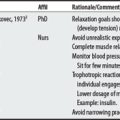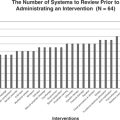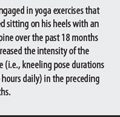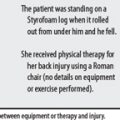Chapter 38 Wound Care
OVERVIEW.
Wound care may incorporate debridement techniques. Debridement is the procedure of removing devitalized tissue (and foreign matter) from a wound. Moist devitalized tissue supports the growth of pathological organisms, initiates an inflammatory response, and retards wound healing. The removal of devitalized tissue is considered necessary for wounds to heal.1
CONTRAINDICATIONS AND PRECAUTIONS
DEBRIDEMENT
Autolytic Debridement (AD)
Autolytic debridement uses moisture-retentive synthetic dressing, permitting devitalized tissue to self-digest from enzymes normally in the wound. AD is indicated when the patient may not tolerate other forms of debridement and would not become infected if the wound was not debrided using faster methods. AD takes longer than other methods.1
S00-T98 INJURY, POISONING, AND CERTAIN OTHER CONSEQUENCES OF EXTERNAL CAUSES
PROCEDURAL CONCERN
Enzymatic Debridement
Topical debriding enzymatic agents are applied to the wound surface of devitalized tissue and are considered if ulcer is not infected, individuals are in LTC facilities or at home or if surgery cannot be tolerated.1
S00-T98 INJURY, POISONING, AND CERTAIN OTHER CONSEQUENCES OF EXTERNAL CAUSES
PROCEDURAL CONCERNS
Whirlpool
Clean pressure ulcers with whirlpool when there is exudate, slough, or necrotic tissue. Discontinue whirlpool when the ulcer is clean.1
E00-E90 ENDOCRINE, NUTRITIONAL, AND METABOLIC DISEASES
F00-F99 MENTAL AND BEHAVIORAL DISORDERS
I00-I99 DISEASES OF THE CIRCULATORY SYSTEM
K00-K93 DISEASES OF THE DIGESTIVE SYSTEM
L00-L99 DISEASES OF THE SKIN AND SUBCUTANEOUS TISSUE
M00-M99 DISEASES OF THE MUSCULOSKELETAL SYSTEM AND CONNECTIVE TISSUE
N00-N99 DISEASES OF THE GENITOURINARY SYSTEM
S00-T98 INJURY, POISONING, AND CERTAIN OTHER CONSEQUENCES OF EXTERNAL CAUSES
PROCEDURAL CONCERNS
Dextranomers
Dextranomers are beads that absorb exudate, bacteria, and other debris when poured into the wound bed.1
Sharp Debridement
Sharp debridement is used when there is an urgent need for debridement, such as when there is advancing cellulitis or sepsis. The technique is used to convert necrotic wound to a clean wound quickly and involves the use of scalpel, scissors, or other sharp instrument to remove devitalized tissue.1
S00-T98 INJURY, POISONING, AND CERTAIN OTHER CONSEQUENCES OF EXTERNAL CAUSES
D50-D89 DISEASES OF BLOOD AND BLOOD-FORMING ORGANS, AND CERTAIN DISORDERS
1 AHCPR: Treatment of pressure ulcers, clinical guideline No 15 (AHCPR Publication No. 95-0652), December 1994.
2 Bates-Jensen BM. Management of necrotic tissue. In: Sussman C, Bates-Jensen BM, editors. Wound care: A collaborative practice manual for physical therapists and nurses. Gaithersburg (MD): Aspen, 1998.
3 Ramundo J, Wells J. Wound debridement. In Bryant RA, editor: Acute and chronic wounds: nursing management, ed 2, St Louis: Mosby, 2000.
4 Loehne HB. Wound debridement and irrigation. In Kloth LC, McCulloch JM, editors: Wound healing alternatives in management, ed 3, Philadelphia: FA Davis, 2002.
5 Sussman C. Whirlpool. In: Sussman C, Bates-Jensen BM, editors. Wound care: A collaborative practice manual for physical therapists and nurses. Gaithersburg (MD): Aspen; 1998:621-642.
6 Helm PA, Kevorkian CG, Lushbaugh M, et al. Burn injury: rehabilitation management in 1982. Arch Phys Med Rehabil. 1982;63:6-16.
7 Sussman C, Bates-Jensen BM. Wound healing physiology and chronic wound healing. In: Sussman C, Bates-Jensen BM, editors. Wound care: A collaborative practice manual for physical therapists and nurses. Gaithersburg (MD): Aspen, 1998.
8 Medical malpractice, verdicts, settlements, and experts, October 1997, p 40, loc 2.




































